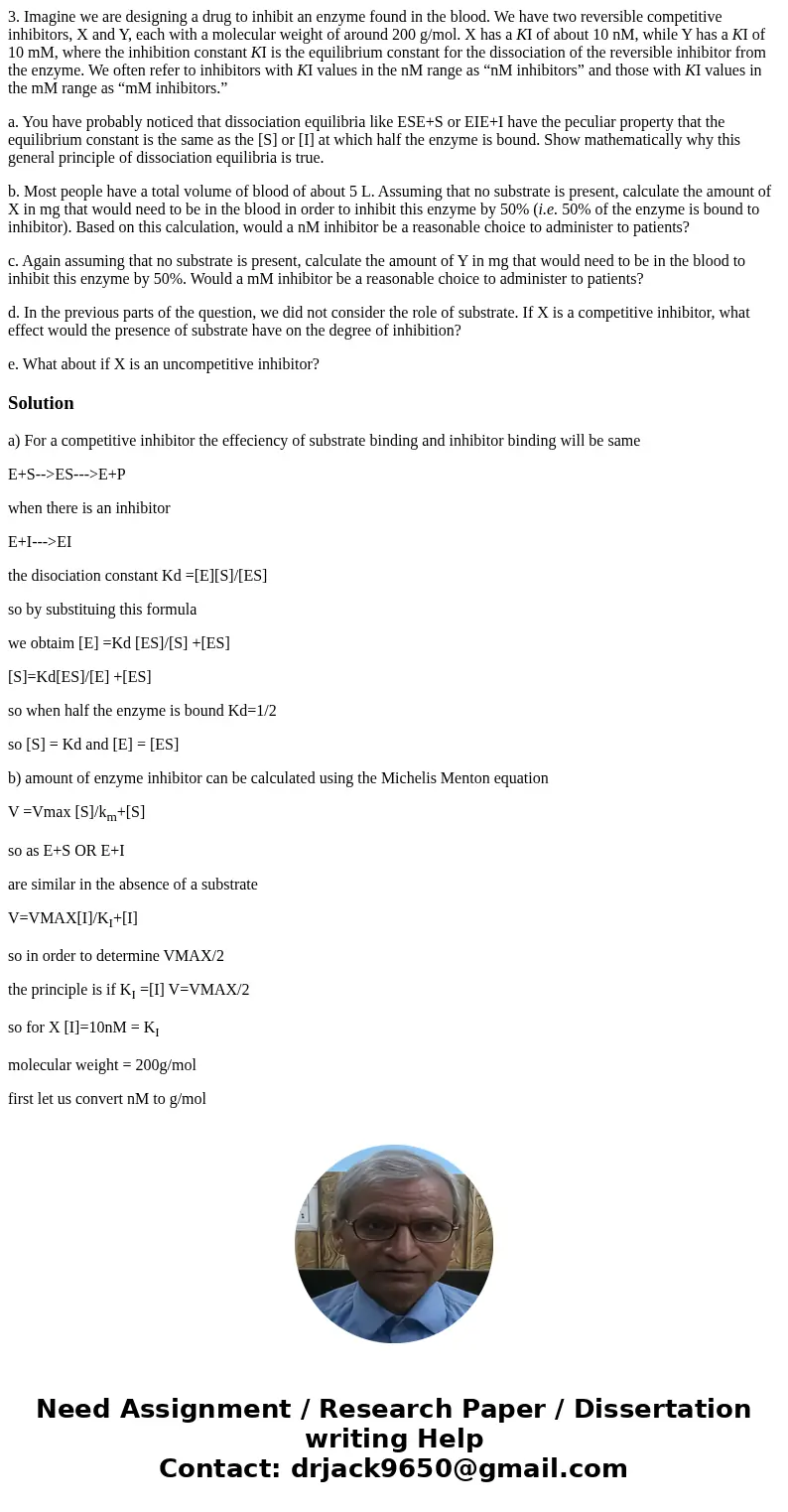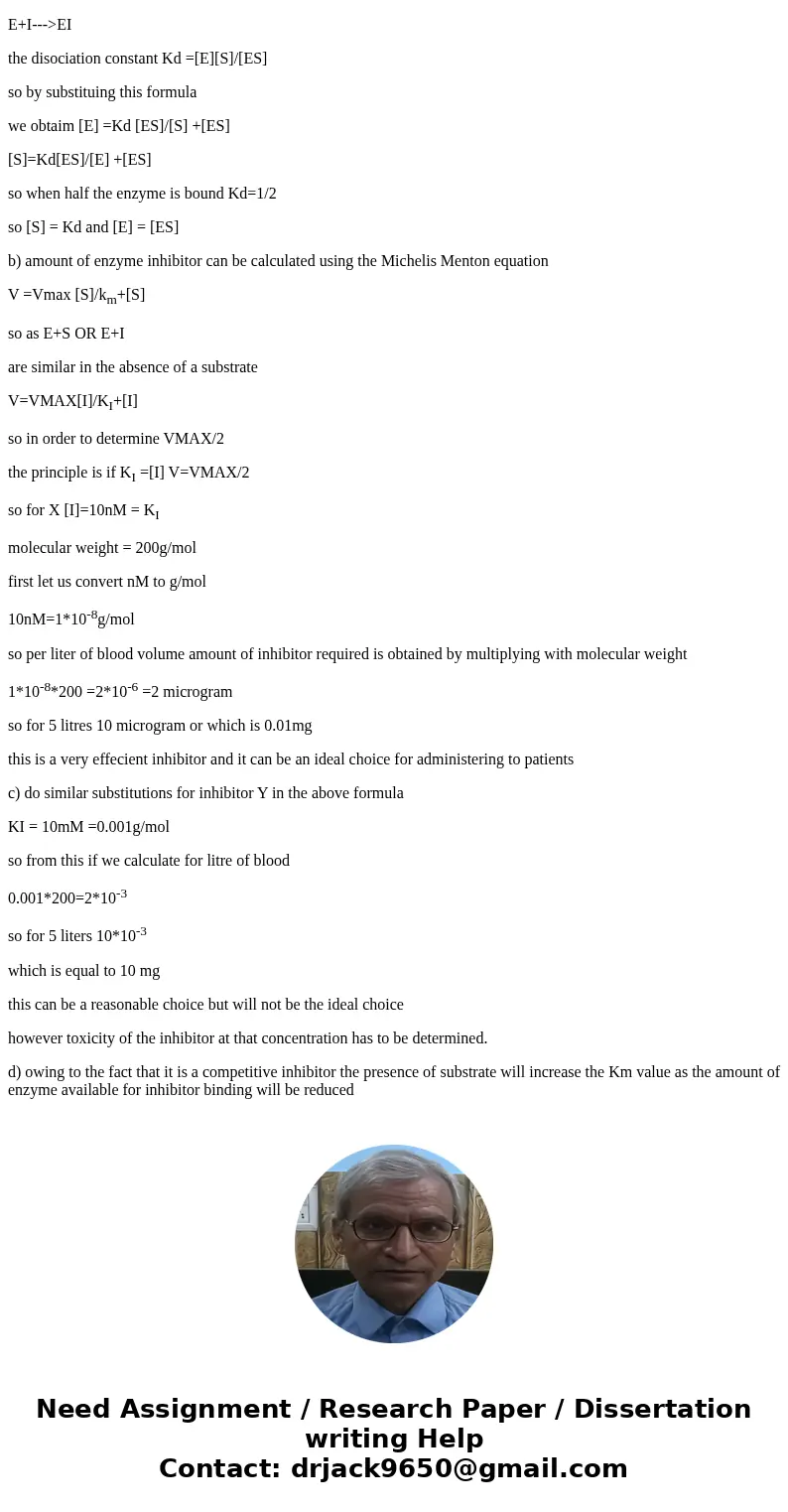3 Imagine we are designing a drug to inhibit an enzyme found
3. Imagine we are designing a drug to inhibit an enzyme found in the blood. We have two reversible competitive inhibitors, X and Y, each with a molecular weight of around 200 g/mol. X has a KI of about 10 nM, while Y has a KI of 10 mM, where the inhibition constant KI is the equilibrium constant for the dissociation of the reversible inhibitor from the enzyme. We often refer to inhibitors with KI values in the nM range as “nM inhibitors” and those with KI values in the mM range as “mM inhibitors.”
a. You have probably noticed that dissociation equilibria like ESE+S or EIE+I have the peculiar property that the equilibrium constant is the same as the [S] or [I] at which half the enzyme is bound. Show mathematically why this general principle of dissociation equilibria is true.
b. Most people have a total volume of blood of about 5 L. Assuming that no substrate is present, calculate the amount of X in mg that would need to be in the blood in order to inhibit this enzyme by 50% (i.e. 50% of the enzyme is bound to inhibitor). Based on this calculation, would a nM inhibitor be a reasonable choice to administer to patients?
c. Again assuming that no substrate is present, calculate the amount of Y in mg that would need to be in the blood to inhibit this enzyme by 50%. Would a mM inhibitor be a reasonable choice to administer to patients?
d. In the previous parts of the question, we did not consider the role of substrate. If X is a competitive inhibitor, what effect would the presence of substrate have on the degree of inhibition?
e. What about if X is an uncompetitive inhibitor?
Solution
a) For a competitive inhibitor the effeciency of substrate binding and inhibitor binding will be same
E+S-->ES--->E+P
when there is an inhibitor
E+I--->EI
the disociation constant Kd =[E][S]/[ES]
so by substituing this formula
we obtaim [E] =Kd [ES]/[S] +[ES]
[S]=Kd[ES]/[E] +[ES]
so when half the enzyme is bound Kd=1/2
so [S] = Kd and [E] = [ES]
b) amount of enzyme inhibitor can be calculated using the Michelis Menton equation
V =Vmax [S]/km+[S]
so as E+S OR E+I
are similar in the absence of a substrate
V=VMAX[I]/KI+[I]
so in order to determine VMAX/2
the principle is if KI =[I] V=VMAX/2
so for X [I]=10nM = KI
molecular weight = 200g/mol
first let us convert nM to g/mol
10nM=1*10-8g/mol
so per liter of blood volume amount of inhibitor required is obtained by multiplying with molecular weight
1*10-8*200 =2*10-6 =2 microgram
so for 5 litres 10 microgram or which is 0.01mg
this is a very effecient inhibitor and it can be an ideal choice for administering to patients
c) do similar substitutions for inhibitor Y in the above formula
KI = 10mM =0.001g/mol
so from this if we calculate for litre of blood
0.001*200=2*10-3
so for 5 liters 10*10-3
which is equal to 10 mg
this can be a reasonable choice but will not be the ideal choice
however toxicity of the inhibitor at that concentration has to be determined.
d) owing to the fact that it is a competitive inhibitor the presence of substrate will increase the Km value as the amount of enzyme available for inhibitor binding will be reduced


 Homework Sourse
Homework Sourse